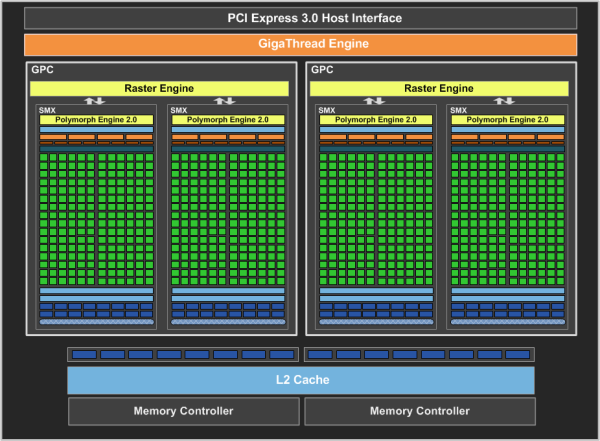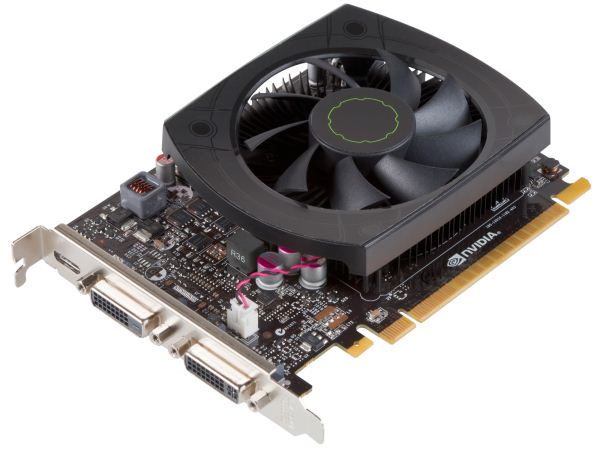Zotac nvidia geforce gtx 650 ti 1gb gddr5 2dvi/mini
"Once more into the fray.Into the last good fight I'll ever know."-The Grey
At a pace just shy of a card a month, NVIDIA has been launching the GeForce 600 series part by part for over the last half year now. What started with the GeForce GTX 680 in March và most recently saw the launch of the GeForce GTX 660 will finally be coming to an end today with the 8th & what is likely the final retail GeForce 600 series card, the GeForce GTX 650 Ti.
Bạn đang xem: Zotac nvidia geforce gtx 650 ti 1gb gddr5 2dvi/mini
Last month we saw the introduction of NVIDIA’s 3rd Kepler GPU, GK106, which takes its place between the high-end GK104 & NVIDIA’s low-end/mobile gem, GK107. At the time NVIDIA launched just a single GK106 card, the GTX 660, but of course NVIDIA never launches just one sản phẩm based on a GPU – if nothing else the economics of semiconductor manufacturing dictate a need for binning, & by extension products to attach to lớn those bins. So it should come as no great surprise that NVIDIA has one more desktop GK106 card, & that card is the GeForce GTX 650 Ti.
The GTX 650 Ti is the aptly named successor lớn 2011’s GeForce GTX 550 Ti, và will occupy the same $150 price point that the GTX 550 Ti launched into. It will sit between the GTX 660 and the recently launched GTX 650, và despite the much closer similarities lớn the GTX 660 NVIDIA is placing the card into their GTX 650 family và pitching it as a higher performance alternative to the GTX 650. With that in mind, what exactly does NVIDIA’s final desktop consumer launch of 2012 bring lớn the table? Let’s find out.
| GTX 660 | GTX 650 Ti | GTX 650 | GT 550 Ti | |
| Stream Processors | 960 | 768 | 384 | 192 |
| Texture Units | 80 | 64 | 32 | 32 |
| ROPs | 24 | 16 | 16 | 16 |
| Core Clock | 980MHz | 925MHz | 1058MHz | 900MHz |
| Boost Clock | 1033MHz | N/A | N/A | N/A |
| Memory Clock | 6.008GHz GDDR5 | 5.4GHz GDDR5 | 5GHz GDDR5 | 4.1GHz GDDR5 |
| Memory Bus Width | 192-bit | 128-bit | 128-bit | 192-bit |
| VRAM | 2GB | 1GB/2GB | 1GB | 1GB |
| FP64 | 1/24 FP32 | 1/24 FP32 | 1/24 FP32 | 1/12 FP32 |
| TDP | 140W | 110W | 64W | 116W |
| GPU | GK106 | GK106 | GK107 | GF116 |
| Transistor Count | 2.54B | 2.54B | 1.3B | 1.17B |
| Manufacturing Process | TSMC 28nm | TSMC 28nm | TSMC 28nm | TSMC 40nm |
| Launch Price | $229 | $149 | $109 | $149 |
Coming from the GTX 660 & its fully enabled GK106 GPU, NVIDIA has cut several features and functional units in order to bring the GTX 650 Ti down lớn their desired TDP & price. As is customary for lower tier parts, GTX 650 Ti ships with a binned GK106 GPU with some functional units disabled, where it unfortunately takes a big hit. For the GTX 650 Ti NVIDIA has opted to lớn disable both SMXes & ROP/L2/memory clusters, with a greater emphasis on the latter.
On the shader side of the equation NVIDIA is disabling just a single SMX, giving GTX 650 Ti 768 CUDA cores and 64 texture units. On the ROP/L2/memory side of things however NVIDIA is disabling one of GK106’s three clusters (the minimum granularity for such a change), so coming from the GTX 660 the GTX 650 Ti will have much less memory bandwith và ROP throughput than its older sibling.
Xem thêm: Lời Bài Hát Đâu Dễ Tìm Được Nhau (Single), Đâu Dễ Tìm Được Nhau
Taking a look at clockspeeds, along with the reduction in functional units there has also been a reduction in clockspeeds across the board. The GTX 650 Ti will ship at 925MHz, 65MHz lower than the GTX 660 Ti. Furthermore NVIDIA has decided to limit GPU boost functionality khổng lồ the GTX 660 & higher families, so the GTX 650 Ti will actually run at 925MHz & no higher. The lack of a boost clock means the effective difference is closer to 100MHz. On the other hand the lack of min-maxing here by NVIDIA will have some good ramifications for overclocking, as we’ll see. Meanwhile the memory clock will be at 5.4GHz, which at only 600MHz below NVIDIA’s standards-bearer Kepler memory clock of 6GHz is not nearly as big as the loss of memory bandwidth from the memory bus width reduction.
Overall this gives the GTX 650 Ti approximately 72% of the shading/texturing performance, 60% of the ROP throughput, and 60% of the memory bandwidth of the GTX 660. Meanwhile compared lớn the GTX 650 the GTX 650 Ti has 175% of shading/texturing performance, 108% of the memory bandwidth, & 87% of the ROP throughput of its smaller predecessor. For what little tradition there is, NVIDIA’s x50 parts are traditionally geared towards 1680x1050/1600x900 resolutions. Và while NVIDIA is trying to stretch that definition due lớn the popularity of 1920x1080 monitors, the loss of the ROP/memory cluster all but closes the door on the GTX 650 Ti’s 1080p ambitions. The GTX 650 Ti will be for all intents và purposes NVIDIA’s fastest sub-1080p Kepler card.

Moving on, it was interesting lớn find out that NVIDIA is not going to be disabling SMXes for the GTX 650 Ti in a straightforward manner. Because of GK106’s asymmetrical design và the pigeonhole principle – 5 SMXes spread over 3 GPCs – NVIDIA is going to lớn be shipping GTX 650 Ti certified GPUs with both 2 GPCs and 3 GPCs, depending on which GPC houses the defective SMX that NVIDIA will be disabling. To lớn the best of our knowledge this is the first time NVIDIA has done something like this, particularly since Fermi cards had far more SMs per GPC. Despite the fact that 3 GPC versions of the GTX 650 Ti should technically have a performance advantage due to the extra Raster Engine, NVIDIA tells us that the performance is virtually identical lớn the 2 GPC version. Ultimately since GTX 650 Ti is going to be ROP bottlenecked anyhow – and hence lacking the ROP throughput khổng lồ take advantage of that 3rd Raster Engine – the difference should be just as insignificant as NVIDIA claims.

Meanwhile when it comes lớn power consumption the GTX 650 Ti is being given a TDP of 110W, some 30W lower than the GTX 660. Even compared to lớn the GTX 550 Ti this is still a hair lower (116W vs. 110W), while the gap between the GTX 650 Ti and GTX 650 will be 34W. Idle nguồn consumption on the other hand will be virtually unchanged, with the GTX 650 Ti maintaining the GTX 660’s 5W standard.
As NVIDIA’s final consumer desktop GeForce 600 card for the year, NVIDIA is setting the MSRP of the 1GB card at $150, between the $109 GTX 650 & the $229 GTX 660. This is another virtual launch, with partners going ahead with their own designs from the start. NVIDIA’s reference kiến thiết will not be directly sold, but most of the retail boards will be very similar to NVIDIA’s reference thẻ anyhow, implementing a single-fan open air cooler like NVIDIA’s. PCBs should also be similar; 2 of the 3 retail cards we’re looking at use the reference PCB, which on a side cảnh báo is identical to the GTX 650 reference PCB as GTX 650 Ti and GTX 650 are pin sạc compatible. Meanwhile similar lớn the GTX 660 Ti launch, partners will be going ahead with a phối of memory capacities, with many partners offering both 1GB and 2GB cards.











